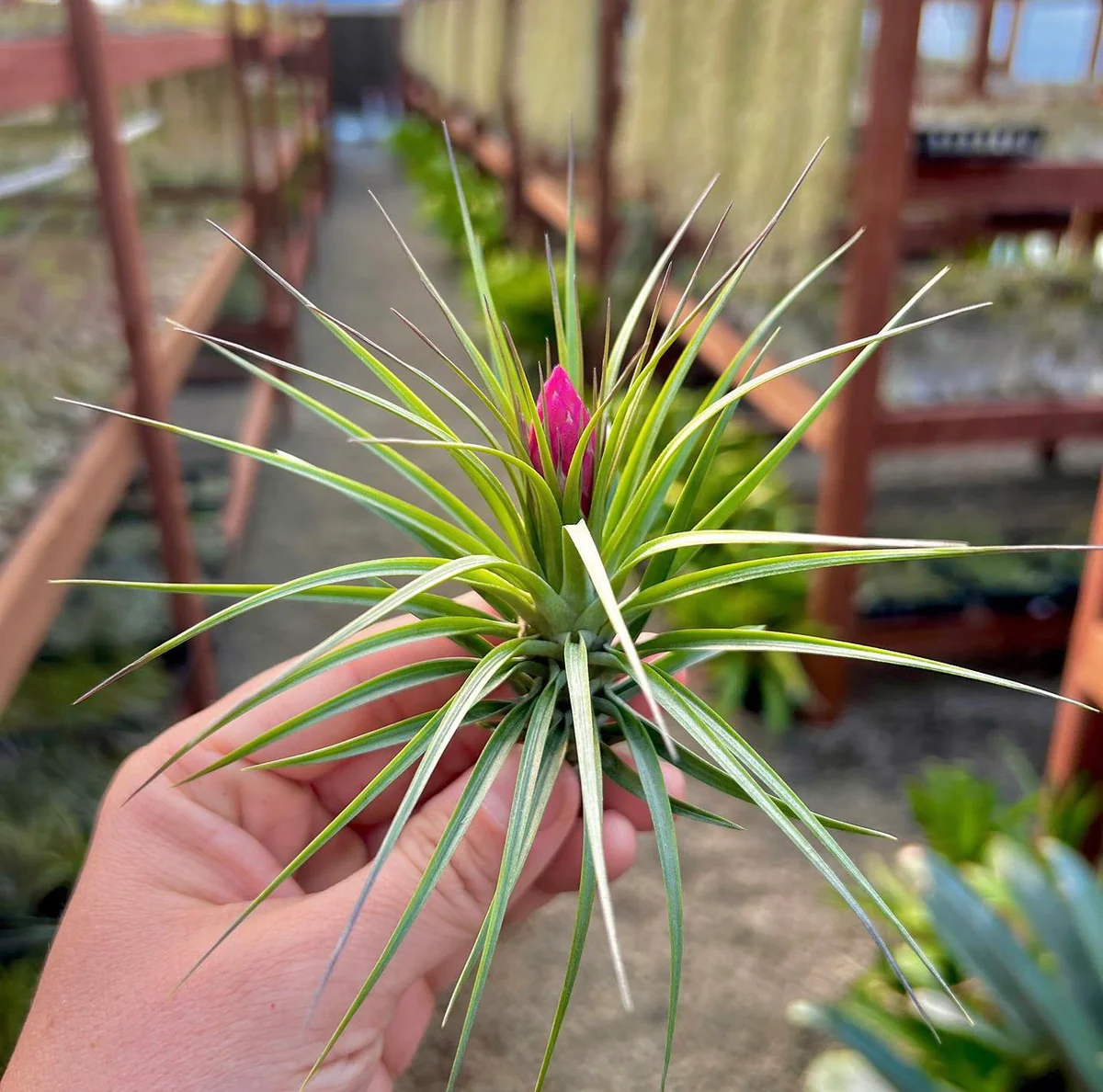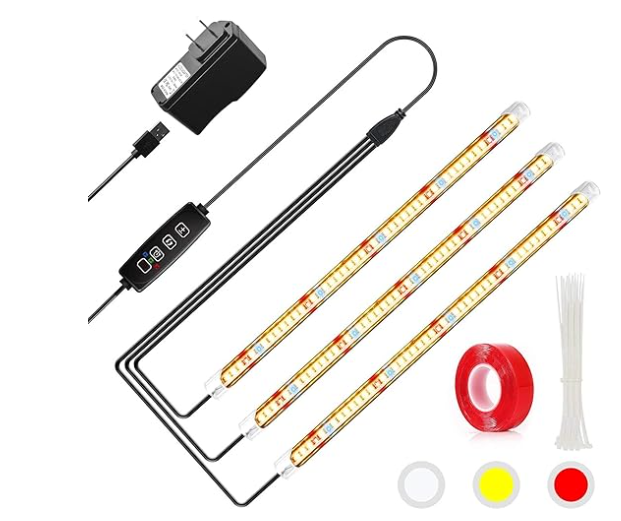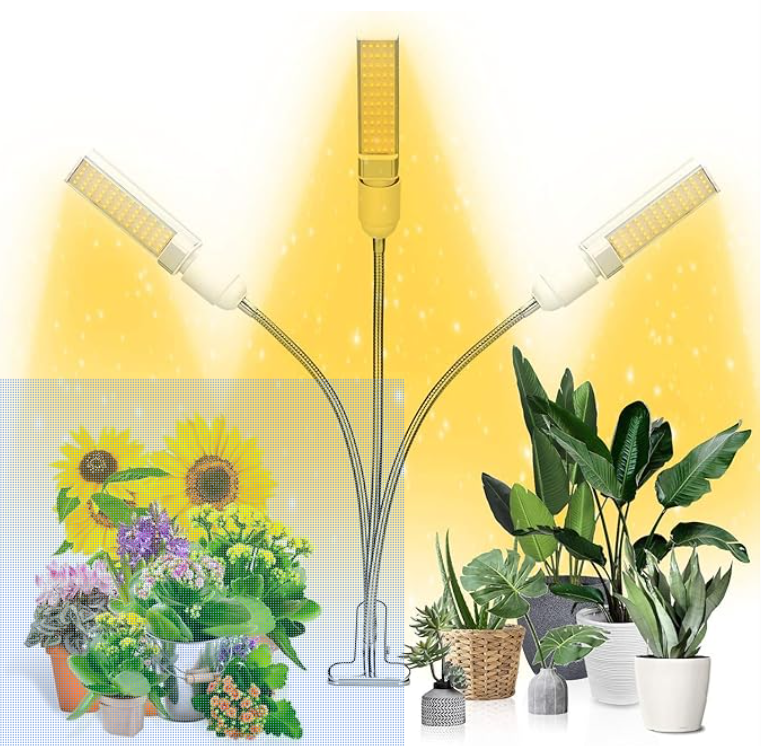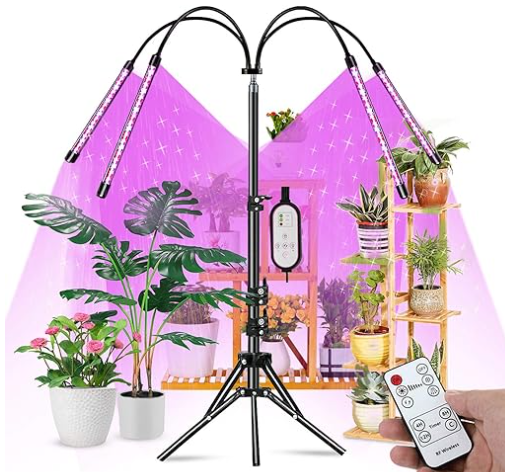How Air Plants Work: The Complete Guide to Tillandsia

Besides their undeniable beauty, air plants are well known for their low maintenance and ability to purify air in enclosed environments. These trendy plants don’t need soil to grow, hence the name ‘air plants’. But their ability to grow without soil doesn’t mean they don’t require any care at all.
So how do air plants work, and what are some of the basic necessities to keep in mind when growing these plants?
Air plants work by releasing oxygen in the room and absorbing contaminants when photosynthesizing, hence their ability to purify air. Although not high maintenance, air plants still require a considerable amount of care in terms of lighting, water, and nutrients.
Curious to learn more about air plants? Then you couldn’t be in a better place. Read on as we review the benefits of these plants and how to take care of them.
What Are Air Plants
Tillandsia, commonly known as air plants, are evergreen, perennial plants that belong to the Bromeliaceae family. The name air plant originates from the plant’s ability to absorb nutrients directly from air without the need for soil. In their natural habitats, these plants tend to cling to tree branches, bare rocks, barks, and other substrates that aren’t exposed and saturated with water for extended periods.
Air plants can be placed into two main types, xeric and mesic. Xeric tillandsias inhabit dry areas and can survive in extremely arid conditions by absorbing water from fog. On the other hand, Mesic tillandsias are less fluffy compared to xeric air plants and tend to grow in rainforests and habitats that receive regular rainfall.
Tillandsias come in different shapes and sizes, with some enthusiasts opting to cross air plants. Some common tillandsias include orchids, Spanish mosses, bromeliads, ball moss, tillandsia stricta, and tillandsia cyanea.
How Air Purifying Plants Work
Air plants purify the air through photosynthesis, the process in which green plants transform light energy into chemical energy. During photosynthesis, air plants capture light energy, which helps to convert carbon dioxide, water, and minerals into oxygen.
While a single air plant might not be enough to purify the air in a large room, having several air plants in a small room can get the job done. These plants help reduce volatile organic compounds (VOCs) from the air. A 1989 NASA experiment revealed that air plants can clean the air by eliminating VOCs like benzene and formaldehyde.
The scientists further revealed that plants with wide leaves, due to increased surface area, tend to perform better air purification jobs than their counterparts with tiny leaves. However, there is still no conclusion about the exact number of plants needed to purify a room.
Although air plants help to purify air in a room to a certain extent, they are mostly grown for their beauty and ease of maintenance. These plants don’t require a lot of attention; however, you’ll still need to satisfy their basic requirements to have them thrive, bloom, and purify your living area.
How Do Air Plants Absorb Water and Nutrients?
Most tillandsias are epiphytes, meaning they grow attaching themselves to trees, rocks, poles, fences, and even wires. These plants don’t have a significant root system as they don’t need roots to absorb nutrients like most other plants. The sole purpose of their roots is to attach and hold the plants in place in their respective growing media.
Contrary to what most people believe, tillandsias aren’t parasitic. They don’t obtain nutrients from the trees they grow on. Instead, they have special openings called trichomes. The trichomes are located on their leaves and play a critical role in water and nutrient absorption from the surrounding air. In short, they only use other trees and poles to hold themselves in strategic positions.
Trichomes are unique hairs found across the surface of tillandsias` leaves. The trichomes are responsible for the soft, hairy appearance of most air plants. These trichomes allow air plants to adapt to various conditions. However, the trichomes in xeric tillandsias are usually more prominent to allow for enhanced water and nutrient absorption.
What Temperatures Are Ideal for Tillandsias
Tillandsias aren’t the most sensitive plants to grow indoors. However, their temperature needs tend to vary depending on the exact type of air plant you’re dealing with. You’ll find that most tillandsias do well in average temperatures that aren’t too hot or cold.
The minimum temperatures for tillandsias should be around 5-10 degrees, while the maximum temperatures shouldn’t exceed 35-40 degrees. It is best advised to shield your air plant from sudden temperature changes.
Aim to grow your plant in a temperature range of 25-30 degrees during the summer and 15-20 degrees during winter. If maintaining the ideal temperature range proves challenging, try your best not to exceed either the minimum or maximum limits.
Watering Needs for Air Plants
Although not the most challenging plants to maintain, watering air plants can prove challenging since too much water might lead to root rot, while too little water can kill the plant. As a result, you’ll need to be extra careful to ensure the plant gets just the right amount of water. Luckily, air plants aren’t water-dependent plants, meaning you can easily satisfy your plant’s needs when it comes to watering.
Generally, there are three ways to water air plants: misting, soaking, and dunking.
So, which watering technique should you apply when dealing with tillandsias? While there is no perfect way to water air plants, you should consider factors like how dry your plant is and when you last watered your air plant.
When watering your tillandsia, you should first consider the type of plant you’re dealing with. Xeric air plants don’t need a lot of water to survive, meaning you won’t need to water them frequently. However, when dealing with mesic air plants, you’ll need to water them more frequently than you would xeric tillandsias.
Misting
Misting is a great way to water air plants lightly. To mist your tillandsia, you’ll need to fill a spray bottle with clean water. When misting, target the leaves and the roots (if any). Focusing only on the root area isn’t advisable since your plant might not get the water it needs.
And since most of the water is likely to drip from the leaves, it is advisable to spray your plant generously. The trichomes need good misting to absorb the water and leave your plant healthy.
Misting isn’t recommended for mesic air plants but works well for xeric tillandsias.
You should aim to mist your xeric air plant at least twice or four times a week. But if you notice your tillandsia’s leaves are curling inwards, you might need to dunk or soak the plant to prevent dehydration.
Dunking
Dunking is another great way to water your tillandsia. This watering technique works well for xeric air plants but can also be used on their mesic counterparts. The trick when dunking air plants is to check on water quality.
Below are steps to observe when watering your air plant using the dunk technique.
- Fill a large bowl or bucket with clean water: We recommend using pond or rainwater. However, tap water can also work if allowed to sit out for a while. Allowing tap water to settle for 20-30 minutes ensures that present (and potentially harmful) chemicals dissipate. Steer clear of using distilled water as it’s usually too pure and can end up pulling nutrients from your plant, and you don’t want that! Artificially softened water is also not a great option due to its high salt content, which doesn’t work too well for Tillandsias.
- Dunk the plant: Dunking the air plant once in the bowl or bucket isn’t enough. You’ll need to dunk it a couple of times to allow the leaves to get fully wet. Once all the leaves are wet, shake the plant gently to remove excess water.
- Place the Plant Upside Down: The last thing you want is a water build-up on your air plant’s leaves. After all, these unique plants use their leaves to absorb water and nutrients. Placing the plant upside down allows for the removal of the water collected at the base of the leaves. Allow the plant to dry for a couple of hours before returning it to the terrarium or the windowsill.
Soaking Air Plants
Another way to water your air plant is by soaking it in water. Although these plants don’t thrive in environments with excessive water, an occasional soak won’t do any harm. When soaking the plants in water, remember not to focus on their roots since, unlike other plants, tillandsia roots only perform the role of anchorage.
Instead, you should submerge the entire plant in water, except if it has a bloom. While soaking a blooming tillandsia will not cause much harm, it’s best to leave the bud undisturbed above the water.
Another important consideration when watering your air plant is to use lukewarm water. This is because cold water can shock your plant. Again, the type of water you should use to water your air plant should be clean. Rainwater works best, but if you don’t have the means to harvest rainwater, then you can use spring, creek, lake, or well water due to their high mineral content.
So how long should you soak your air plants in water? As already established, air plants don’t need a lot of water. Soaking the plant for 20 minutes to an hour once a week or after every 10 days should be enough to leave it well watered. You might need to soak the plant for over an hour if you’re dealing with a severely dehydrated air plant.
After soaking the air plant, next is to allow it to dry. Turning the plant upside down is highly recommended as it’ll ensure the leaves are completely dried. But you can also lay the plants on a dish towel on their side as an alternative to the upside-down drying technique. Avoid returning the plants to their vases or terrariums when wet, as it more often than not leads to root rot.
Is It Necessary To Fertilize Air Plants?
Most people believe that air plants are hardcore plants that just need a bit of water to survive. While this might be true (to some extent), these plants will only thrive when given the right nutrients. Remember, in their natural habitats, air plants usually absorb nutrients from dead leaves, surrounding debris, and various excrement.
In an indoor setting, the chances of obtaining vital nutrients become significantly minimized. Even worse, air plants in tiny terrariums have reduced chances of absorbing important nutrients. As a result, it is highly advisable to opt for water-soluble fertilizers, which should be given to the plant during its watering cycles.
The number of times you fertilize an air plant should hinge on the fertilizer’s strength. However, fertilizing your air plant once a month should be enough to make it healthy and promote blooming.
Light Requirements for Air Plants
While not the most demanding plants in terms of care, air plants still have specific requirements, especially when it comes to lighting and watering. In their natural habitats, tillandsias normally grow in strategic positions on other plants such that they receive the right amount of indirect sunlight. The indirect sunlight is perfect for tillandsias to thrive, meaning you’ll need to recreate a similar environment for your air plant to grow and bloom as desired.
Therefore, since air plants require indirect sunlight, will direct exposure to sunlight affect their growth? The answer is both yes and no.
If you overexpose your air plant to excess sunlight for extended periods (especially scorching afternoon sun), then chances are your plant will become dehydrated a lot faster and eventually dry up. However, these unique plants can do with a bit of exposure to direct sunlight.
But if you must expose your air plant to direct sunlight, here’s a couple of things to keep in mind:
Target the Morning Sun
Direct exposure to the morning sun won’t harm your plant. This is because the morning to mid-morning sun isn’t too hot or scorching to leave your plant dehydrated. Even better, the presence of mist and evaporating morning dew can help keep the plants hydrated. Exposing your air plant to direct sunlight for 3-4 hours isn’t advisable. Instead, aim for around 40 minutes to a maximum of 1.5 hours if you must place your plant in the morning sun.
Mist Your Air Plant More Frequently
Misting air plants regularly is a great way to keep them hydrated before their next watering cycle. As a good rule of thumb, you should increase misting frequency if your air plant is placed in direct sunlight.
Daily Exposure to Direct Sunlight Isn’t Ideal
Granted, tillandsias love sunlight. But they do grow under the canopy of trees for a reason. In their natural habitats, they’ll have days where sunlight is strong enough to pass through the branches, and on other days (especially cloudy and rainy days), they’ll receive minimum sunlight. Therefore, if you must expose your plant to direct sunlight, don’t do it more than twice a week.
The specific light requirement of air plants leads to the question, can these low-maintenance plants grow in offices or rooms that don’t receive natural light? Yes, tillandsias can grow without natural light. However, you’ll need to make up for the lack of natural light by setting up an artificial light source for your plant.
There are a couple of rules to observe when using artificial light to promote photosynthesis in air plants, as discussed below:
- Full-spectrum light is mandatory: Unfortunately, incandescent bulbs won’t provide your air plant with the required light quality. Instead, go for full-spectrum light provided by fluorescent bulbs. Full-spectrum light from artificial bulbs is of high quality and promotes photosynthesis, similar to natural sunlight.
- Check on distance: Despite their convenience in the absence of natural sunlight, artificial grow lights aren’t strong enough to reach your air plant if placed too far away. Aim for a distance of around 2-3 feet.
- Duration is key when dealing with artificial light: Unlike natural sunlight, artificial light doesn’t have the intensity to stimulate photosynthesis in air plants within a short span. As a result, you’ll need to place the plant close to the artificial light source for around 12 hours. Getting an artificial bulb with a timer should help satisfy your air plant’s light needs without too much effort.
Below are some of the best artificial lights to consider when growing tillandsias in areas that don’t receive natural sunlight:
CXhome T5 Full Spectrum LED Grow Lights

This full spectrum grow light by CXhome comes with three timer settings (3, 9, and 12 hours). And to satisfy your tillandsia’s light needs across all growth stages, this full spectrum light produces yellow, white, and red light.
With this grow light, you can easily adjust the brightness up to ten levels to accommodate light needs at different stages. The automatic timer allows you to go about your daily duties without having to switch the bulb on and off manually.
Impressively, this grow light features an aviation-grade radiator that prevents the lamp from overheating even when used continuously for 24 hours. The 78-inch power cord allows you to keep the bulb in power without moving the plant from time to time.
Ankace Full Spectrum Tri Head Grow Lamp

The Ankace Full spectrum grow lamp emits wavelengths in the 380nm-800nm range, which is similar to the sunlight required for photosynthesis in air plants. The tri-head gooseneck allows you to direct light toward your tillandsias at the desired length.
The LED lamps are easily replaceable as Ankace used standard products in the manufacture of this grow light. This indoor plant light also allows you to adjust the maximum light emitted.
The presence of an aviation-grade sink and a temperature control unit means the bulb won’t emit heat that can harm the plant even when left on for several hours.
VNFOX Four-Head Full Spectrum Plant Light

Featuring four goosenecks, this full spectrum grow light is easy to set up and can manage 360-degree plant coverage, courtesy of its easy-to-adjust tripod stand. The grow light produces light in three modes, mixed light, blue light, and red light, and has 9 brightness settings.
The timing function allows you to set an automatic timer (4, 8, and 12 hours), giving you the freedom to go about your daily duties. Each LED bar works independently, allowing you to regulate the full spectrum lighting depending on your plant’s growth cycle.
When dealing with air plants, it is highly advisable to check whether they are getting the required, high-quality, full-spectrum light. Leaving your plant in dark places will almost certainly limit its ability to photosynthesize, which greatly impairs its development.
Unfortunately, air plants often show signs of light deficiency when it’s too late. Faded leaves and discoloration usually indicate that your plant isn’t receiving enough sunlight. Therefore, be sure to take the necessary steps to provide adequate lighting for your tillandsia if you want it to thrive.
Growth Cycle of Air Plants
Did you know that air plants only flower once? The duration of the blossoms usually depends on the species, as some can blossom for a couple of days, while others blossom for weeks or even months. Again, the color of blooms depends on the species of the air plant you’re growing.
Flowering often represents the peak of a tillandsia. That is, the onset of flowering not only indicates that the plant has matured, but it also means it has started to age and is sadly about to die. But the good news, however, is that during or after flowering, air plants reproduce around 2- 8 pups (depending on species).
Pups are baby air plants that tend to grow beside the mother plant. While these baby air plants start as tiny pups, they eventually develop and transform into independent parent plants. Once these pups have grown and become independent, you’ll need to separate them from the parent plant.
So, when is the right time to remove your pups from the parent plant? Ideally, pups should be separated when they reach ½ or at least 1/3 of the parent’s size. At this time, these plants will have developed at least a minimum of three leaves. The leaves will ensure the pups can receive nutrients independently without the assistance of the parent plant.
Alternatively, if you don’t want to separate the parent plant from 2 or 3 of its pups, you can allow the parent plant to die gradually as the pups mature. And once the parent plant dies, you can proceed to remove the dead leaves.
Snipping off the dead leaves is necessary as it’ll give the pups the energy they need to develop. You can either use your hands or cut them off with sterilized shears or scissors. Be careful, though, as cutting a premature pup will almost certainly kill it as it doesn’t have the necessary leaves system to absorb nutrients independently.
Common Pests and Diseases Affecting Air Plants
Although highly resistant to a wide range of pests and diseases, air plants aren’t immune to fungi or pest attacks. This means you must be on the lookout for pest attacks, more so since it’s easier to treat them before they progress.
Below are common conditions to be on the lookout for.
Rot and Fungus
Tillandsias don’t thrive in excessively humid, wet, or cold environments with poor ventilation. Excess water on the leaves or roots will lead to rotting and fungus infections. To avoid fungus and rot, be sure to dry the plants after every watering cycle.
Mealybugs
Mealybugs fancy attacking air plants and tend to form cotton-like white fluff on their leaves. Once you notice the white fluffs, rinse your plant in flowing water and allow the plant to dry. These bugs tend to feed on the juices of air plant leaves, affecting the plant’s ability to absorb nutrients and water.
Although using water to flush out the bugs might help eliminate the pests, you might need to use insecticides when dealing with serious infestations. However, the best way to keep your plant healthy is to regularly observe its leaf and root systems. Don’t wait too long before treating your plant if you suspect a potential pest infestation or a fungi attack.
How Air Plants Work: Winding Up
Air plants make wonderful additions to your home, especially once they bloom. But even without blooming, these plants can help to purify the air as they photosynthesize, in the process reducing the toxin concentration in your home environment.
It’s worth noting that the primary role of air plants isn’t to purify the air (as you’ll need thousands of air plants to have a proper purifying effect). They beautify spaces either in work or home environments. Even better, they’re easy to maintain, meaning you can still have an air plant that’s healthy and ready to bloom despite your busy schedule.
Sources
Oakhillgardens:How To Care For Tillandsia
Gardenmyths:Air Purifying Plants Do They Work
Time:Indoor Plants Air Quality
Sunset:Keep Your Air Plant Alive With These 6 Simple Tricks-
Chemicalsafetyfacts:Formaldehyde
Epa:What Are Volatile Organic Compounds
- How to Revive A Dying Citrus Tree - January 7, 2024
- How Do Limes Grow Without Seeds? Here’s The Answer - January 2, 2024
- How Air Plants Work: The Complete Guide to Tillandsia - December 30, 2023
